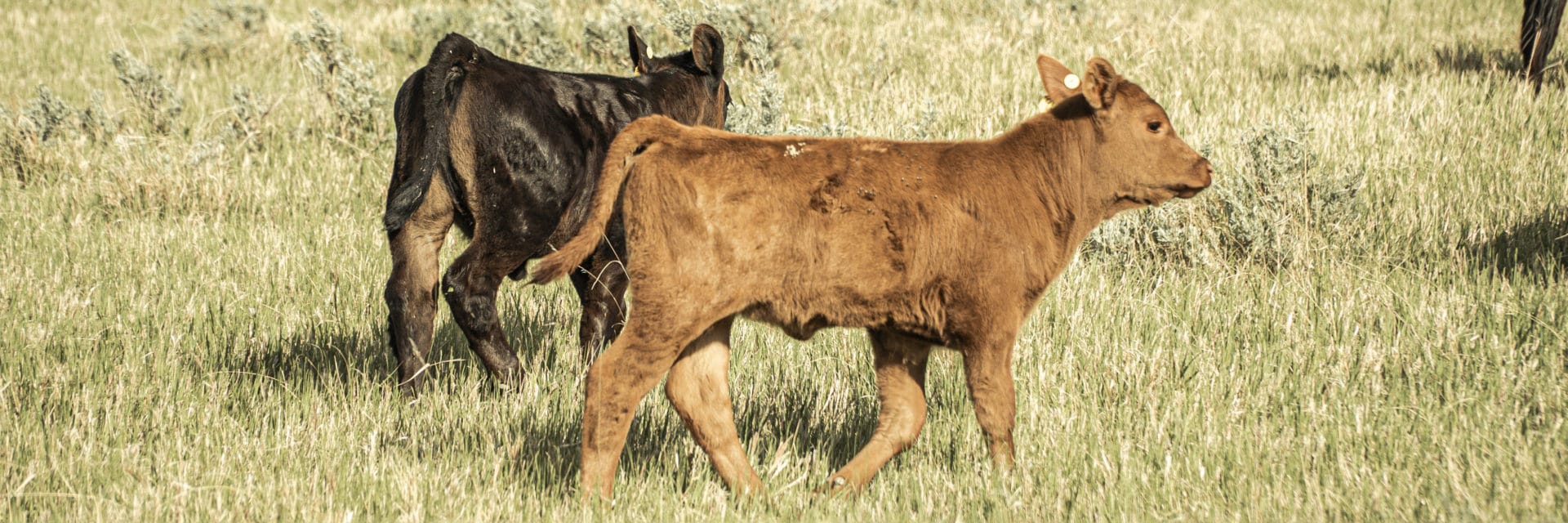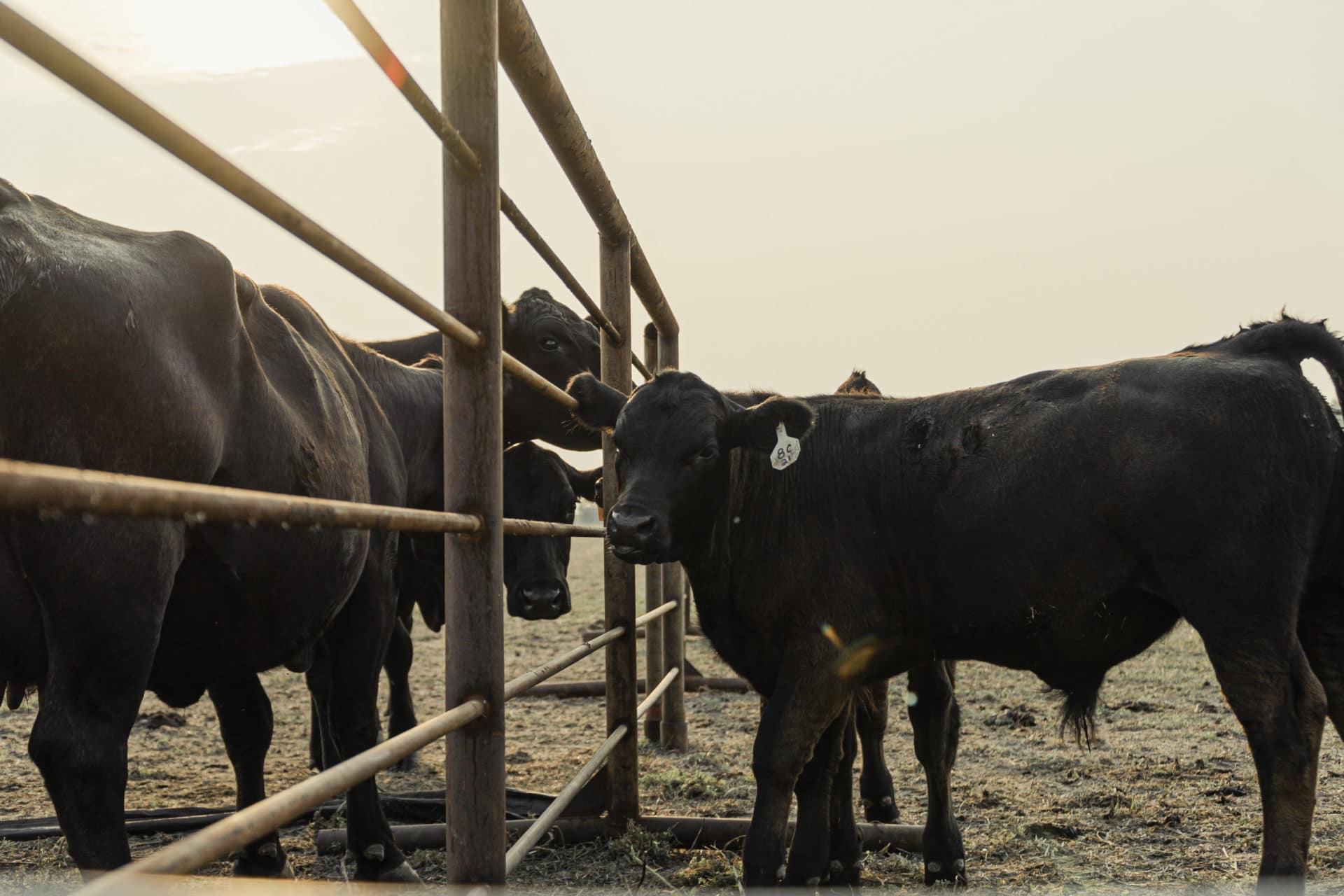Last updated on October 4th, 2023 at 04:15 pm
Here’s why managing early-weaned calves fetches more dollars at sale time.
If ever there’s a year to consider early weaning, 2022 is it. Just one glance at the weekly Drought Monitor map shows a vast portion of cattle country is in various stages of desperation as water holes, creeks, and rivers dry up.
How Early Is 'Early'... and Why Should You Consider Early Weaning?
Early weaning is usually defined as weaning calves 90 days earlier than normal. By this time, the calves’ rumens are developed enough that they’re consuming a fair amount of forage. That means one of the most important advantages to early weaning is it extends a drought-shortened grazing season and provides more forage for the cows.
“Ending lactation reduces the cow’s nutrient requirements and dry matter intake compared to when she is nursing a calf,” says Warren Rusche, Extension beef feedlot management associate at South Dakota State University.
“Calves consume approximately 2.0% to 2.5% of body weight of dry forage; weaning early eliminates that forage demand as well. Research by SDSU demonstrated that weaning calves 90 days earlier cut forage disappearance by 36%, or 18.9 pounds per head per day. That equates to an additional 1.1AUM in additional grazing available, which should help ranchers reduce the number of cows they need to move off grass and reduce the risk of overgrazing,” he writes in “Early Weaning as a Drought Management Strategy.”

That’s a clear advantage in stretching drought-hammered pastures. But don’t forget to provide a top-quality mineral and vitamin supplement; doing so will help your cows get the most out of the lower-quality, dried grass and prime your calves for the marketplace.
Managing Ranch Input Costs
John Erramouspe, a third-generation beef producer on the high desert of southwest Wyoming, is fighting the worst drought he can remember. He’ll need to come off his Bureau of Land Management allotment early and is looking at feeding $350 to $400-per-ton hay for more than three months longer than normal.
That will require a handful of very sharp pencils to adjust input costs. However, one input he won’t cut is his mineral tubs. That’s because, when he’s trying to stretch his forage and feed as far and as long as possible, cutting back on the crucial macro and micronutrients his cows need is simply not an option.
“I think it’s important because it helps (the cows) make use of the feed they get on the meadows and the feed we’re feeding them,” he says. “It helps us stretch that hay out a little bit. It does help them make better use of the dry pastures in the meadows. So the tubs are important and I think they pay for themselves. I know they pay for themselves.”
Other Reasons to Wean Early
In addition to stretching feed, there are several other advantages to early weaning, according to “Early Weaning Beef Calves” by Greg Lardy, head of the animal sciences department at North Dakota State University, and Carl Dahlen, NDSU Extension beef specialist:
- Improved body condition “By weaning early, the cow’s nutrient requirements for lactation are eliminated and cows are able to maintain or increase body condition prior to the fall and winter feeding period.”
- Improved pregnancy rates “Limited feed resources can negatively impact reproductive performance. Weaning before or during the breeding season can allow cows a greater opportunity to rebreed in an optimum time frame and an increase in pregnancy rates can be expected.”
There are, however, a few things to consider before making the decision to pull the calves early:
- Increased attention to management “Early weaning requires greater attention to proper health, nutrition and management practices.”
- Increased cash costs Early weaning will likely result in increased spending. “Instead of pasture and their mother’s milk, early weaned calves will eat high-quality grains, hay, protein supplements and/or commercially prepared feeds. In addition, beef cattle producers must have facilities to feed calves or hire a custom backgrounder or feedlot to do this work,” Lardy and Dahlen write.

What About Marketing Your Calves?
So why can’t you just strip the calves off the cows and haul them to town? You can, but you very likely won’t like the numbers you see on the check.
Clearly, selling unweaned calves right off the cow means no inputs, but it also means you’ll take barrel-bottom prices at the sale barn. That’s because order buyers know those are very high-risk calves and will discount them accordingly.
Then there’s this: if you’re selling early-weaned calves out of desperation, so are some of your neighbors. The law of supply and demand dictates that if buyers are faced with a glut of high-risk cattle, the price goes down even more.
How you manage early-weaned calves factors heavily into their perceived value. As the market has clearly shown for many years, calves that are weaned and vaccinated are worth more than calves that are unvaccinated and weaned in the trailer on the way to the sale barn.
Consider data from Superior Livestock Auction video sales for cattle sold the summer of 2020. Because unweaned, unvaccinated calves aren’t sold often via video, the base for price comparison is VAC-24, calves vaccinated at branding and sold off the cow.
“VAC-24 calves sold during the summer of 2020 received an average sale price of $147.69 per cwt., or $8.94 per cwt. less than VAC-45 calves, and $9.88 per cwt. less than VAC-60 calves,” according to an article in Drovers magazine.
Another popular alternative is VAC-34, and VAC-34+. The VAC-34 program requires calves to be vaccinated 2-4 weeks prior to shipping while still on the cow. The VAC-34+ program requires calves to be vaccinated twice while still on the cow; once at branding and once 2-4 weeks prior to shipping.
The average weight for the calves was 580 pounds. If you vaccinated at branding and wean the calves 90 days early, they’ll likely weigh less, meaning they’ll fetch more money per cwt. but less per head.
Will it pay to background your calves for 45 to 60 days? Fire up the computer and do some more head-scratching.
What Are the Pros of Value-Added Programs?
While you’re at it, consider the advantages of becoming part of a value-added program, such as Never-Ever, Natural, Non-Hormone Treated Cattle (NHTC), or GAP. In these types of programs, cattle health is essential, as using antibiotics will cause a calf to no longer be eligible.
Mike Stark runs 450 mama cows on his ranch in southeast Montana near Baker. He’s enrolled in the GAP 4 program and says the health of his calves is exceptional since he started using Riomax® tubs. Calves on a good mineral and vitamin supplement respond well to vaccinations, so they don’t have as much sickness as they did in the past. That’s because proper mineral supplementation primes the immune system to handle viral and bacterial challenges.
That’s important on the ranch and in the feedyard because the feedyard is the ultimate test for a strong immune system. Stark says he knows his calves get ‘er done while on feed because the buyers call him back every year.
So backgrounding and vaccinating your early-weaned calves could be a paying proposition, especially if you can do it at home. According to Rusche, some producers have successfully weaned calves on pasture with a creep feeder. “Once calves are consuming sufficient amounts of creep feed, the cows are sorted off, leaving the calves behind. Using small grain regrowth, cover crops or crop residue if available is another strategy to cut costs.”


